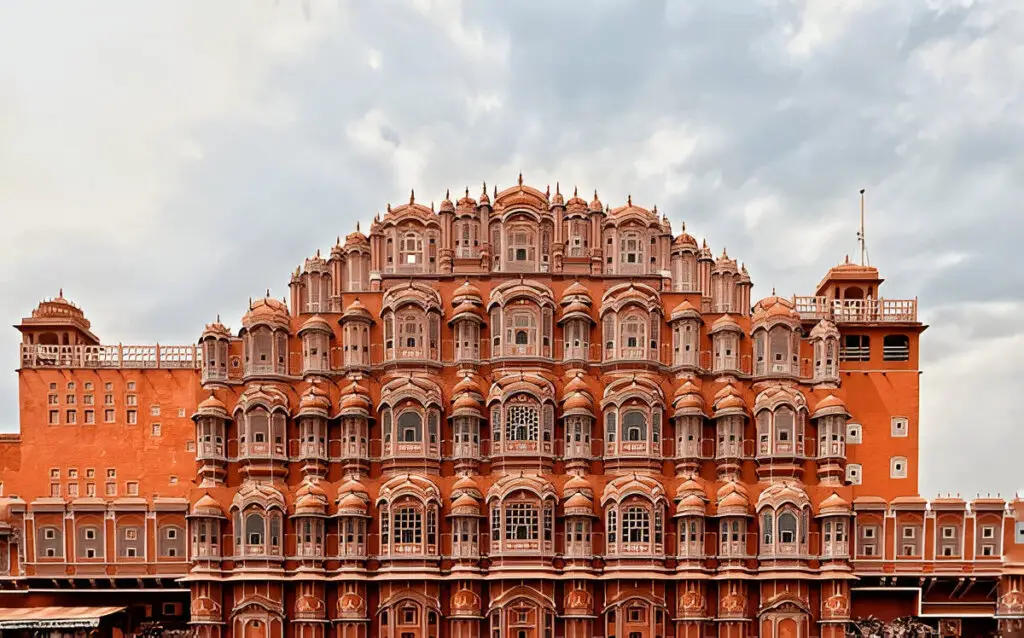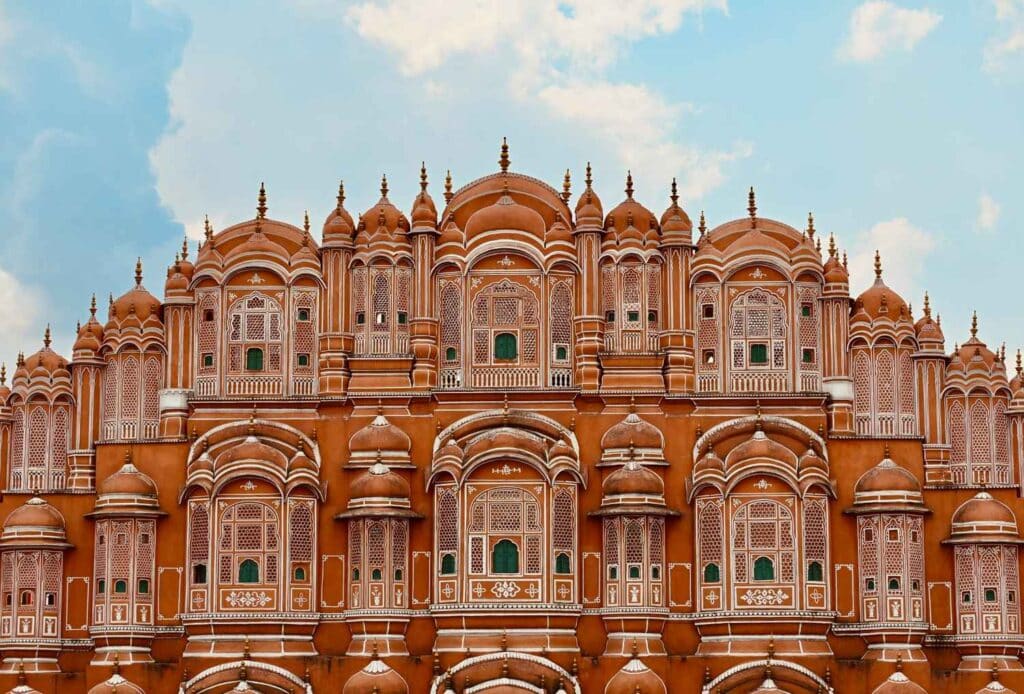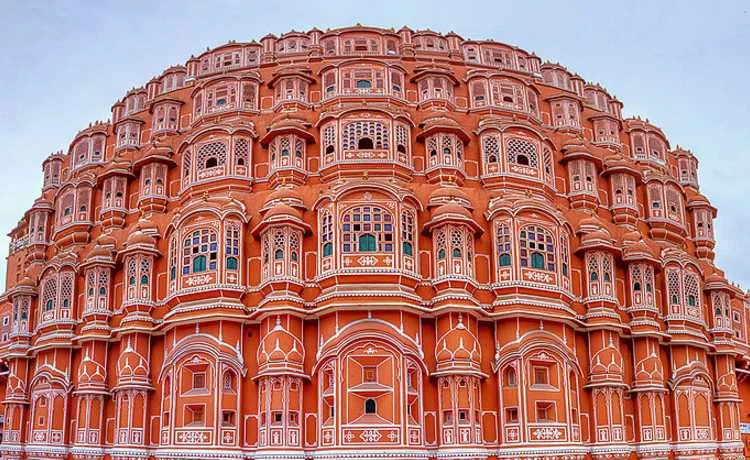
Jaipur, the Pink City of India, is famous for its rich heritage, royal palaces, and architectural wonders. Among its many landmarks, Hawa Mahal stands out as one of the most fascinating and iconic monuments. Also known as the Palace of Winds, this stunning five-story structure attracts history lovers, architecture enthusiasts, and travelers from across the globe.
In this detailed guide, we will explore the history, architecture, visiting details, best photography spots, nearby attractions, and shopping experiences around Hawa Mahal.
History of Hawa Mahal

One of the most common questions visitors ask is, “Why was Hawa Mahal built?” Built in 1799 by Maharaja Sawai Pratap Singh, Hawa Mahal was designed as an extension of the City Palace of Jaipur. The primary reason behind its construction was to allow the royal ladies of the court to observe city life and festivities while maintaining purdah (seclusion).
The architect behind this masterpiece was Lal Chand Ustad, who crafted the palace in a way that allowed natural cooling and ventilation, making it a perfect retreat during Rajasthan’s scorching summers.
Architectural Marvel: Design & Structure

Hawa Mahal is an excellent example of Rajput and Mughal architectural fusion. The palace’s 953 intricately carved windows (jharokhas) resemble a honeycomb and serve a functional purpose – they allow cool air to pass through, keeping the interior comfortable even during peak summers. This unique ventilation system is why it is called the Palace of Winds.
Key Features of Hawa Mahal’s Architecture:
- Pyramid-shaped five-story structure resembling a beehive.
- 953 windows (jharokhas) for proper air circulation.
- Constructed using red and pink sandstone, matching Jaipur’s Pink City aesthetic.
- No direct entrance from the front; visitors enter from the City Palace side.
Visiting Information: Tickets, Timings & Best Time to Visit
Hawa Mahal Entry Fee
- Indian tourists: ₹50 per person
- Foreign tourists: ₹200 per person
- Camera charges: No additional fee
Hawa Mahal Visiting Hours
- Opening time: 9:00 AM
- Closing time: 4:30 PM
- Best time to visit: Early morning (for fewer crowds and cooler temperatures)
For those planning a night visit, Hawa Mahal is not open at night, but its beautifully illuminated facade makes for a breathtaking view.
Best Photography Spots at Hawa Mahal
For photography enthusiasts, Hawa Mahal offers incredible photo opportunities. Some of the best angles and viewpoints include:
- Tattoo Cafe & Wind View Cafe: Ideal for capturing a full frontal view.
- Inside the Mahal: Stunning window shots with light streaming in.
- Street-side shots: Capturing Hawa Mahal in its bustling surroundings.
- Sunrise or sunset shots: Beautiful golden-hour lighting.
Things to Do Near Hawa Mahal
Hawa Mahal’s central location makes it easy to explore nearby attractions in Jaipur:
1. City Palace (600m away)
Explore the lavish City Palace, home to Jaipur’s royal family, showcasing museums, courtyards, and historical artifacts.
2. Jantar Mantar (700m away)
A UNESCO World Heritage site featuring astronomical instruments built by Maharaja Jai Singh II.
3. Johari Bazaar & Hawa Mahal Market
One of Jaipur’s most famous markets, perfect for shopping for:
- Traditional Rajasthani jewelry
- Handcrafted souvenirs
- Colorful textiles and fabrics
4. Best Cafes Near Hawa Mahal
Enjoy a scenic view of the Palace of Winds while sipping coffee at:
- Wind View Cafe
- The Tattoo Cafe
- Hawk View Restaurant
How to Reach Hawa Mahal
Hawa Mahal is located in the heart of Jaipur and is easily accessible:
- By Air: Jaipur International Airport is 12 km away.
- By Train: Jaipur Railway Station is 5 km away.
- By Road: Local buses, taxis, and auto-rickshaws are readily available.
Hawa Mahal Shopping Guide
If you love shopping, the markets near Hawa Mahal offer an excellent selection of traditional Rajasthani goods:
- Lac jewelry & bangles (a specialty of Jaipur)
- Blue pottery (perfect for home decor)
- Handmade textiles & embroidered sarees
- Jaipuri quilts & bedsheets
Fun Facts About Hawa Mahal
- Hawa Mahal has no front entrance; visitors enter from the City Palace side.
- The structure is inspired by Krishna’s crown.
- Despite being five stories high, it is only one room wide.
- The cooling effect from its windows eliminates the need for air conditioning.
- It is Jaipur’s most Instagrammed monument.
Conclusion
Hawa Mahal is not just an architectural masterpiece but a symbol of Jaipur’s royal history and culture. Whether you’re a history enthusiast, an architecture lover, or a traveler seeking the best photography spots, this Palace of Winds has something for everyone.
Planning your visit? Make sure to explore the nearby attractions, shop for local souvenirs, and capture stunning views of this breathtaking monument. Hawa Mahal remains a must-visit destination for anyone traveling to Jaipur.
Have you visited Hawa Mahal? Share your experience in the comments below!
What is the historical significance of Hawa Mahal in Jaipur?
Hawa Mahal, built in 1799 by Maharaja Sawai Pratap Singh, is a stunning example of Rajput architecture. It was constructed to allow the royal women to observe street festivities and daily life without being seen. The structure is designed to resemble the crown of Lord Krishna and is known for its intricate design, including 953 small windows (jharokhas) that allow the breeze to cool the interior, hence the name “Palace of Winds.”
How can I get the best view of Hawa Mahal during my visit?
The best view of Hawa Mahal can be obtained from the street level directly in front of the building. For a closer look at its architectural details, you can enter and explore the small museum inside. The views from the upper floors offer a closer view of the intricate windows and the city around it. Sunset time provides a picturesque view with the golden light reflecting off its pink sandstone walls.
What are the best times of year to visit Hawa Mahal to avoid crowds?
The best times to visit Hawa Mahal are during the off-peak months, from April to September, when tourism is slower. Early mornings or late afternoons, especially on weekdays, will also help you avoid the largest crowds. However, if you prefer a lively atmosphere, visiting during the winter months (October to March) is ideal, though it may be more crowded.
Are there any entry fees for visiting Hawa Mahal?
Yes, there is an entry fee for visiting Hawa Mahal. For Indian citizens, the fee is around ₹50, and for foreign nationals, it is approximately ₹200. Fees may vary, so it is always advisable to check the latest details before planning your visit.
What are the key architectural features of Hawa Mahal that make it unique?
Hawa Mahal is renowned for its unique blend of Rajput and Mughal architectural styles. Its most notable feature is the 953 small windows, or jharokhas, which are intricately decorated with lattice work. The structure has five stories, and each floor is designed like a temple with arches and balconies, creating a sense of openness and light. The façade is made of pink sandstone, earning it the nickname “Pink Palace.”
Can I visit Hawa Mahal with kids? Are there any special activities for families?
Yes, Hawa Mahal is family-friendly and can be enjoyed by children as well. While there are no specific children’s activities, the building itself with its fascinating architecture, views, and the small museum inside is sure to capture the attention of younger visitors. The nearby markets also offer a great opportunity for families to explore and shop for souvenirs.
How long does it typically take to explore Hawa Mahal?
A typical visit to Hawa Mahal lasts between 30 minutes to an hour. If you choose to take a guided tour or explore the museum in detail, it might take longer, around 1.5 hours. Most visitors spend time admiring the architecture, taking photographs, and learning about its history.
Are there guided tours available for a deeper understanding of Hawa Mahal’s history?
Yes, guided tours are available at Hawa Mahal, either through audio guides or by hiring a local guide at the entrance. The guides provide detailed historical insights and can answer any specific questions about the architecture and the history of the palace, enriching the visitor experience.
What other attractions are located near Hawa Mahal that I can visit in one trip?
There are several other notable attractions near Hawa Mahal. These include the City Palace, which is a short walk away, the Jantar Mantar observatory, and the Nahargarh Fort, which offers stunning panoramic views of Jaipur. The local bazaars, such as Johari Bazaar, are also nearby for a traditional shopping experience.
Is there any cultural importance related to how Hawa Mahal was built and designed that I should understand before my visit?
Yes, Hawa Mahal was built so royal women could watch street festivals and everyday life without being seen, since they couldn’t go out in public. The design is practical and private, with lots of small windows that let in a breeze while keeping them hidden. The building’s shape looks like Lord Krishna’s crown, showing how important religion and culture were to the royal family.